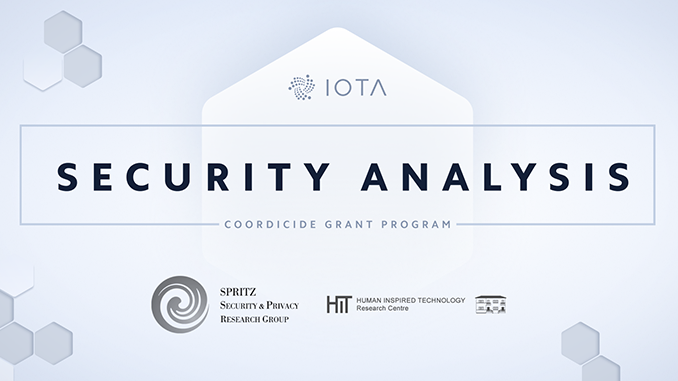
At IOTA, preparations are in full swing for the abolition of the central coordinator with the Coordicide project. In order to have the concept and implementation checked by an independent party, the IOTA Foundation has now provided funds for the specialised SPRITZ Institute, which is based at the University of Padua.
IOTA is eagerly awaiting the imminent transfer of the first components of Chrysalis aka 1.5 to the Mainnet. At the same time, the developers of the IOTA Foundation are already working on IOTA 2.0, which, under the name Coordicide, will implement the removal of the central coordinator. For this technologically ambitious project, IOTA has now gained an external partner for safety analysis in the form of the SPRITZ Institute from Padua in Italy, the IOTA Foundation announced in a blog post. The SPRITZ Security and Privacy Research Group is praised by IOTA as one of the leading institutes in this field and will be provided with financial support from the foundation – not quantified in detail.
Background on IOTA, SPRITZ and Coordicide
For SPRITZ, Professor Mauro Conti will be responsible for managing the project with IOTA. Conti founded SPRITZ in 2011 and has already dealt with safety aspects in the Internet of Things (IoT) on several occasions. Coordicide is IOTA’s most important medium-term objective and is therefore called IOTA 2.0. This is because IOTA has continued to install a central coordinator in its Tanglenet who has the final control over the validation of transactions. Such a central body, however, contradicts the principles of crypto-currencies and blockchains, which are supposed to be safe from undesired influences.
Monti sees several tasks in the deeper analysis of Coordicide. The first task will be to test Coordicide’s protocol for security against known and possibly unknown methods of attackers. At the same time, the software design of Coordicide will also be tested to see if it meets the requirements of fair integration of less powerful end devices from IoT. SPRITZ will also be looking into the future of IOTA: the focus will be on how the reputation of network participants is dealt with in IOTA 2.0. According to Monti, this aspect is decisive for the level of security that can actually be achieved.
IOTA initially mentions a year as the time frame for the project. Monti promises that results will be published on the SPRITZ website as well as through IOTA’s official channels. For the implementation of Coordicide, IOTA has so far set March 2021 as the target date, probably meaning making it available on the Testnet.
Conclusion: External audit by Coordicide good idea from IOTA
For IOTA, the crypto year 2020 was disgraced in February when a serious security problem was discovered at the official Trinity Wallet. Until March, the Mainnet had to be blocked for transactions and the central coordinator was deactivated. The incident led to a drop in IOTA’s share price and damaged its reputation, as internal security checks had apparently failed.
With Coordicide, IOTA is being led into a new era and if mistakes were to occur, IOTA would probably be history. Involving external specialists as early as possible, as the IOTA Foundation is now doing with SPRITZ, is hopefully more than just a fig leaf. In the face of increasingly good news about technological renewal, IOTA’s share price has managed to settle close to USD 0.40, thus making up for the losses of the recent past. Optimists expect further price gains with IOTA 1.5 and 2.0. However, mishaps in terms of security must not occur again.
Best place to buy Bitcoin and IOTA:

Leave a Reply